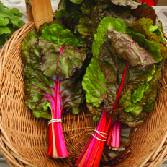-
CATEGORY ::
- All Seeds /
- All Flower Seeds







Coffea Arabica Seeds
SEASON
Perennial
USDA ZONES
8 - 10
HEIGHT
12 inches
BLOOM SEASON
Mid spring
BLOOM COLOR
White
ENVIRONMENT
Partial shade
SOIL TYPE
Well drained soil with pH 6.1 - 6.5
DEER RESISTANT
Yes
HOUSE PLANT
No
SEASON
Perennial
USDA ZONES
5 - 10
HEIGHT
10 inches
BLOOM SEASON
Spring through winter
BLOOM COLOR
Mix
ENVIRONMENT
Partial shade
SOIL TYPE
Well-drained, pH 6.1 - 7.5
DEER RESISTANT
Yes
HOUSE PLANT
Yes
LATIN NAME
Sinningia speciosa
SEASON
Annual
USDA ZONES
5 - 10
HEIGHT
8 inches
WIDTH
30 inches
BLOOM SEASON
Mid spring to early fall
BLOOM COLOR
Yellow with white edge
GROWTH RATE
Fast
ENVIRONMENT
Full sun
DEER RESISTANT
Yes
LATIN NAME
Limnanthes douglasii
SEASON
Perennial
USDA ZONES
7 - 11
HEIGHT
28 inches
BLOOM SEASON
Spring to fall
BLOOM COLOR
Rosy purple
ENVIRONMENT
Full sun to partial shade
SOIL TYPE
Well drained soils, pH 6.6 to 7.5
DEER RESISTANT
Yes
SEASON
Perennial
USDA ZONES
7 - 11
HEIGHT
4 inches
WIDTH
12 - 18 inches
BLOOM SEASON
Early spring to early fall
BLOOM COLOR
Pink
ENVIRONMENT
Full sun to partial shade
FOOT TRAFFIC
Light
DEER RESISTANT
Yes
SEASON
Annual
USDA ZONES
3 - 11
HEIGHT
100 - 140 inches
BLOOM SEASON
Late spring to late summer
BLOOM COLOR
Mix
ENVIRONMENT
Full sun
SOIL TYPE
Well drained, pH 6.6 - 7.5
DEER RESISTANT
No
HOUSE PLANT
No
SEASON
Annual
USDA ZONES
4 - 9
HEIGHT
12 inches
BLOOM SEASON
Late summer to early fall
BLOOM COLOR
Mix
ENVIRONMENT
Full sun
SOIL TYPE
Moist, well-drained, pH 6.6 - 7.3
DEER RESISTANT
Yes
SEASON
Perennial
USDA ZONES
9 - 11
HEIGHT
120 inches
BLOOM SEASON
Mid summer to late fall
BLOOM COLOR
Orange, red, yellow
ENVIRONMENT
Full sun
SOIL TYPE
Sandy, well drained soil, pH 5.5 - 7.5
DEER RESISTANT
Yes
LATIN NAME
Mina lobata
About...
Coffee (Coffea Arabica Nana) - Wouldn't it be nice to grow your own coffee house plant from coffee seeds? Coffea arabica nana is a dwarf bush that makes a very attractive indoor plant with white flowers followed by the fruit.MORE FLOWER OPTIONS
Planting Directions
TEMPERATURE
80 - 85F
AVERAGE GERM TIME
60 - 90 days
LIGHT REQUIRED
Yes
DEPTH
Sow seeds 1/2 inch deep
SOWING RATE
1 seed per plant
MOISTURE
Soak seeds overnight before planting. Seeds should not be kept too moi...more Soak seeds overnight before planting. Seeds should not be kept too moist and allowed to almost dry out between watering...less
PLANT SPACING
18 inches
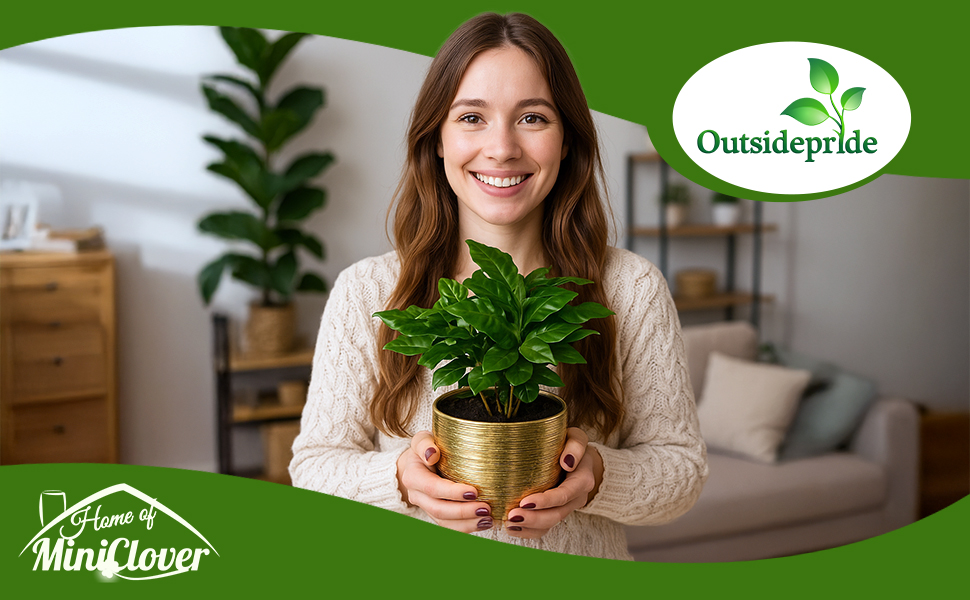
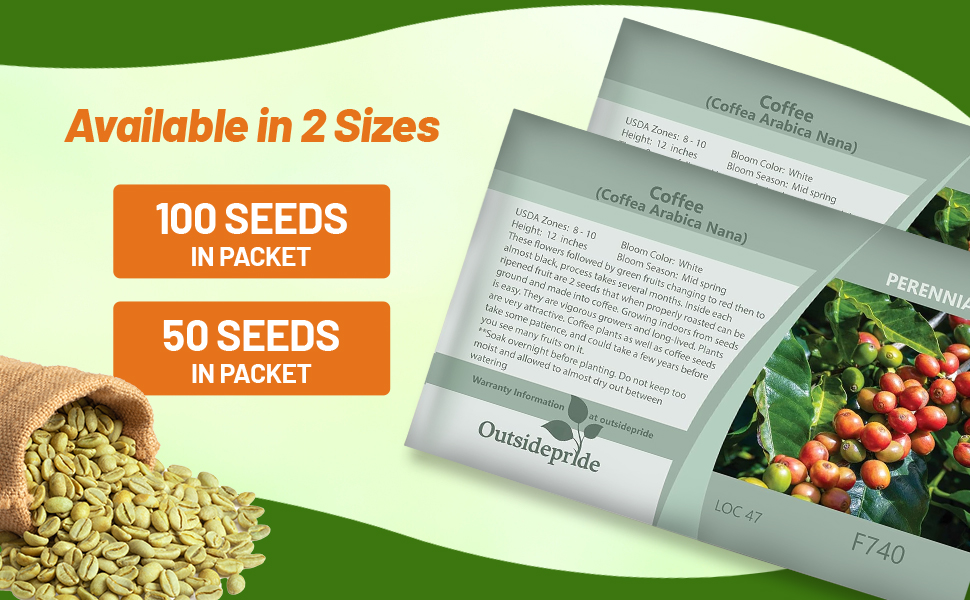
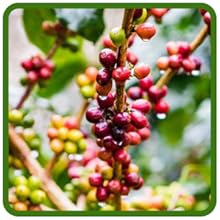
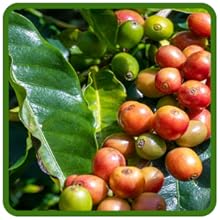
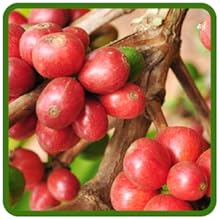
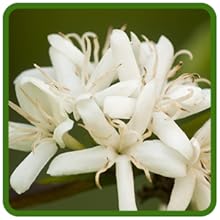
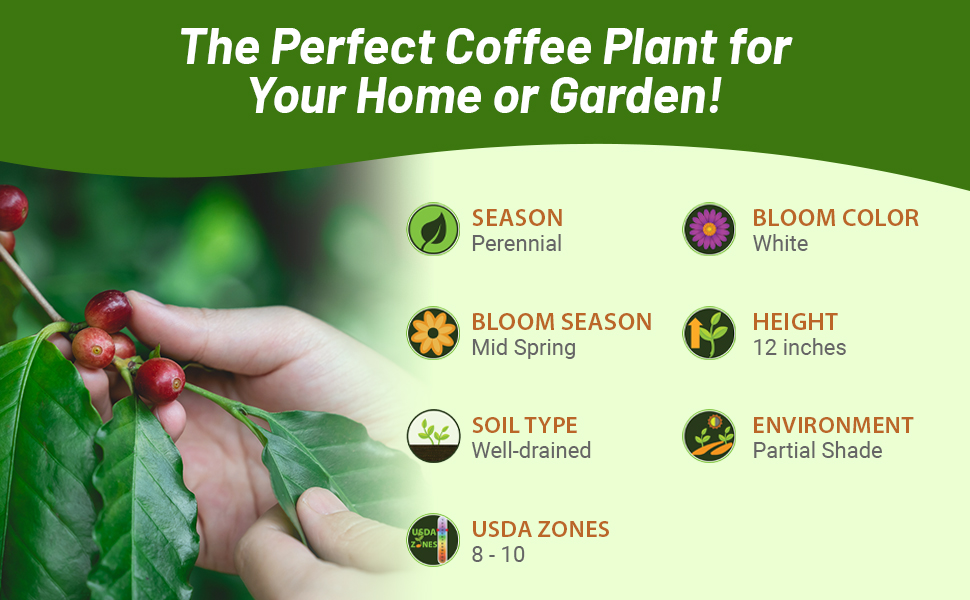
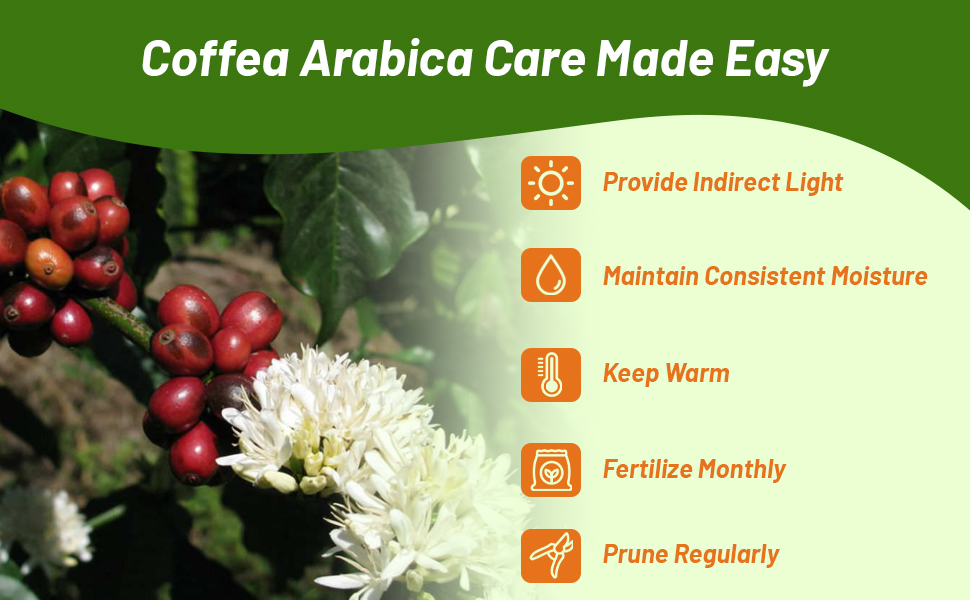
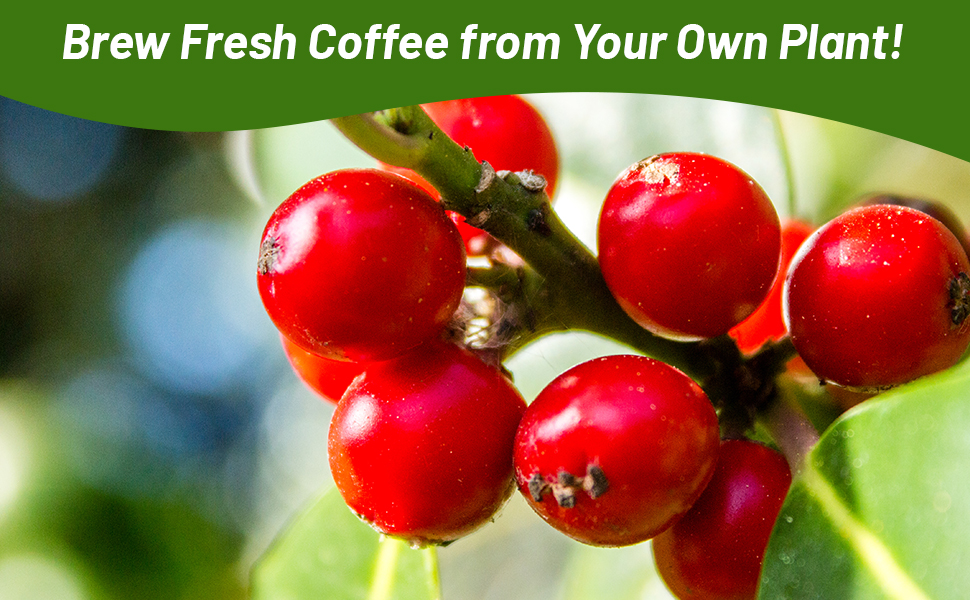
Coffee (Coffea Arabica Nana) - Wouldn't it be nice to grow your own coffee house plant from coffee seeds? Coffea arabica nana is a dwarf bush with beans that contain caffeine, theophylline and theobromine. The beans are dried, roasted and ground, and then extracted with water to produce coffee. Coffea arabica is a species of coffee bush that produces arabica coffee, accounting for the majority of the coffee consumed in the world. This species of bush is the oldest known bush to be cultivated for coffee production. Until the beginning of the 20th century, it was virtually the only type of tree from which coffee was harvested commercially.
Common Questions
Is coffee plant easy to care for?
Indeed, the coffee plant thrives as a simple houseplant when given the right conditions: indirect light, consistently moist soil, and regular fertilization during its active growth phase in spring and summer.
How long does it take for a coffee plant to produce beans?
Indoor coffee plants typically require three to five years to bloom and yield beans. It's worth mentioning that not all coffee types naturally bear beans. With C. arabica houseplant, pollination isn't a concern; even without pollinating insects, the plant can still blossom and produce beans.
Can I put my coffee plant outside?
It all comes down to the climate. For extremely hot summers where temperatures regularly exceed 86 degrees F, it's best to keep the plant indoors in a temperature-controlled setting. In regions with milder summer climates, relocate it to a spot outdoors with partial shade. Be diligent about watering, especially in hot weather (outdoor potted plants need more frequent watering). Remember to bring it back indoors when nighttime temperatures dip below 60 degrees F.
What is the best time to plant a coffee plant in the garden?
Plant a coffee plant outdoors between spring and midsummer when the weather is wet and cloudy. It's best to avoid planting during hot and dry conditions.
Why are my leaves turning brown?
Typically, this is due to leaf scorch. Fixing it is merely a matter of giving your plant more indirect sunlight. Browning leaves can also be due to too much water or root rot from sitting in waterlogged soil.
Planting Directions
TEMPERATURE
70 - 75F
AVERAGE GERM TIME
21 - 28 days
LIGHT REQUIRED
Yes
DEPTH
Do not cover the seed but press into the soil
SOWING RATE
4 seeds per plant
MOISTURE
Keep seed moist until germination
PLANT SPACING
10 inches
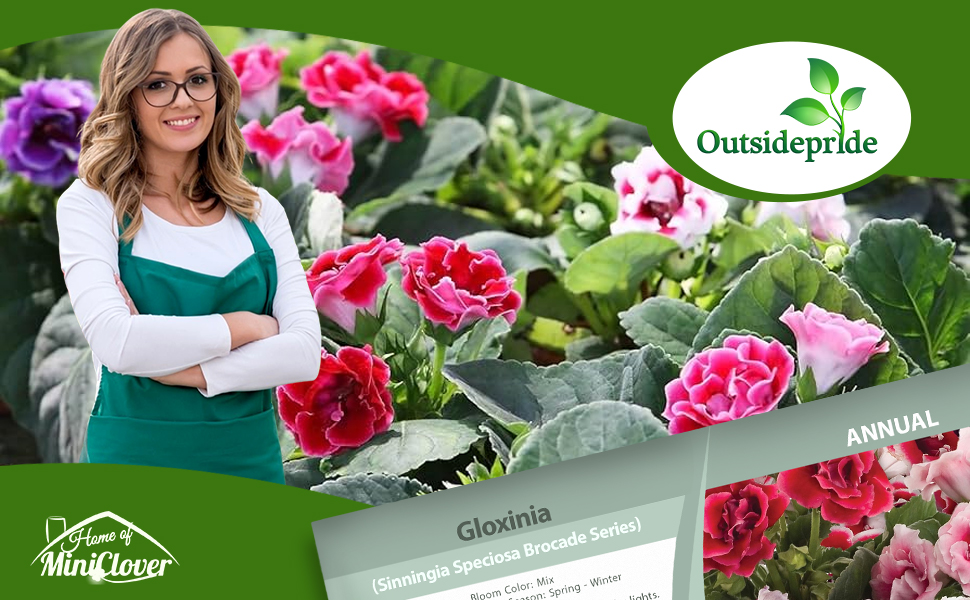
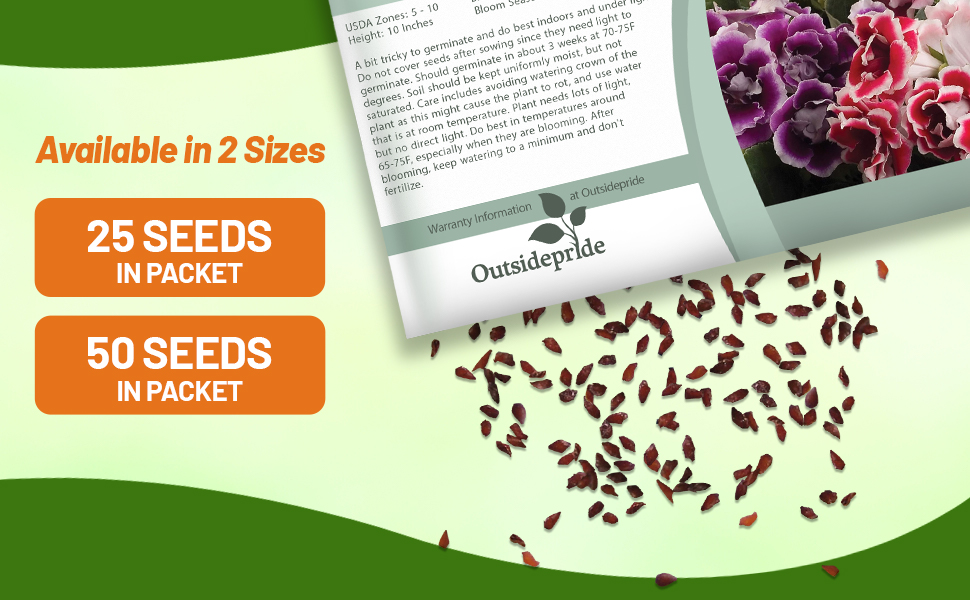
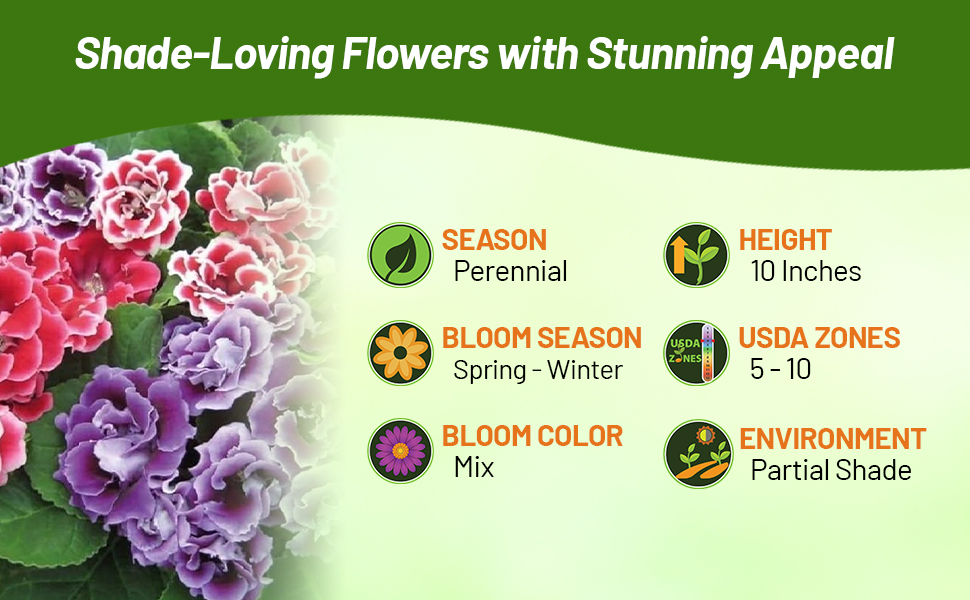
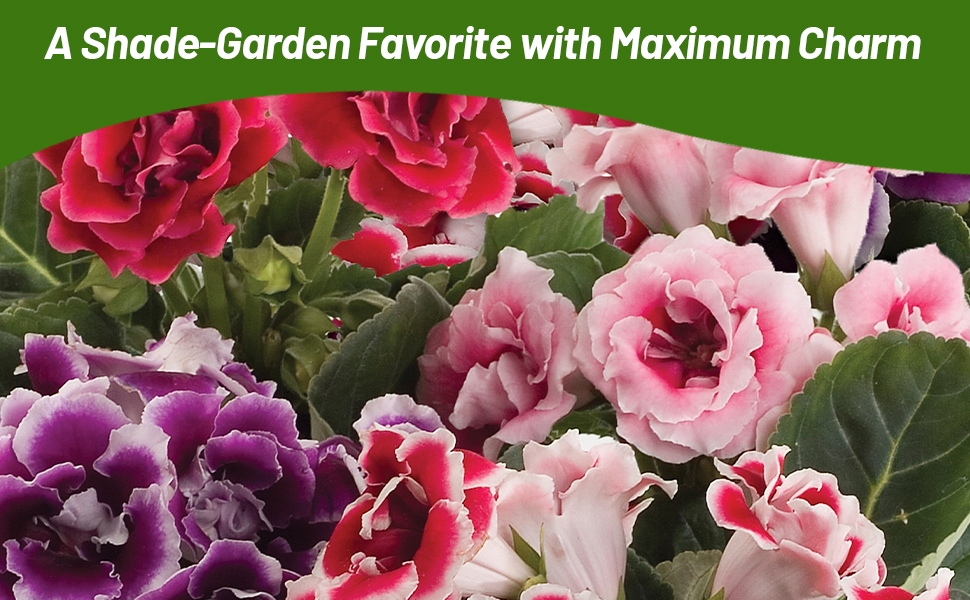
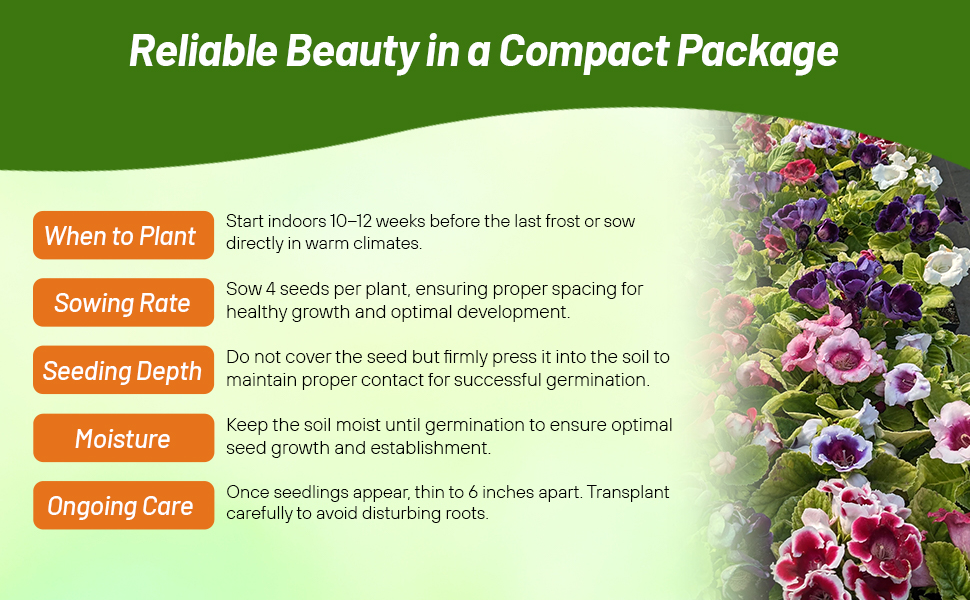
Gloxinia (Sinningia Speciosa Brocade Series) - Sow Gloxinia seeds to produce a beautiful mixture of red, blue, and white blooms. These compact Gloxinia plants blossom four to six months after sowing. They will flower for about 2 months, go dormant for about 2 months, and then begin growing again and start flowering. Gloxinias make a great house plant, giving wonderful, colorful blooms! Sinningia Speciosa is often referred to as Florist's Gloxinia or Brazilian Gloxinia.
Gloxina seeds are a bit tricky to germinate and do best indoors and under lights. Do not cover the flower seeds after sowing since they need light to germinate. Sinningia Speciosa seeds should germinate in about 3 weeks at 70 - 75F degrees. Soil should be kept uniformly moist, but do not keep it saturated. Florist's Gloxinia care includes avoiding watering the crown of the plant as this might cause the plant to rot, and use water that is at room temperature for watering. The Brazilian Gloxinia plant needs lots of light, but no direct light. Gloxinias do best in temperatures around 65 - 75F degrees, especially when they are blooming. After blooming, keep watering to a minimum and don't fertilize.
Common Questions
Do I need to prune my gloxinia?
To encourage a longer bloom season, you will need to deadhead your spent flowers. After the bloom period is over and your plant enters dormancy, prune back any dead or dying foliage.
My leaves are dropping, what do I do?
This can occur from sudden temperature changes such as drafts.
My leaves look scorched, why?
Direct sunlight can burn the leaves of your gloxinia, causing them to scorch and crisp.
My flowers are losing their vibrancy, what do I do?
This is typically caused by inadequate light move your plant to an area with more light but not direct sunlight.
Planting Directions
TEMPERATURE
70F
AVERAGE GERM TIME
14 - 21 days
LIGHT REQUIRED
Yes
DEPTH
Sow seed 1/8 inch deep
SOIL TYPE
Fertile, well draind soil from sandy loam to clay
SOWING RATE
Approximately 1000 seeds covers 20 square feet or 3 - 4 seeds per plant
MOISTURE
Keep seeds moist until germination occurs
PLANT SPACING
24 inches

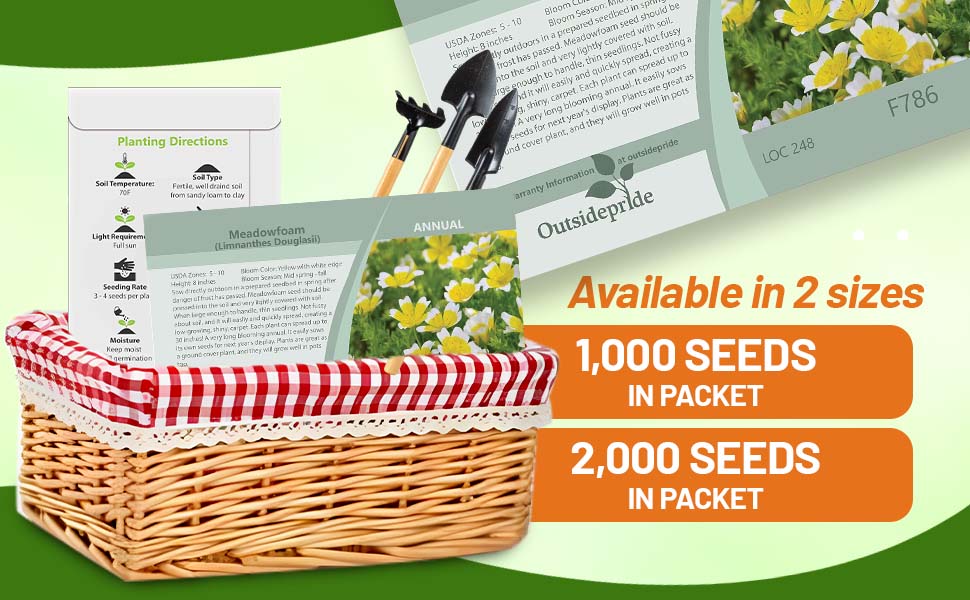
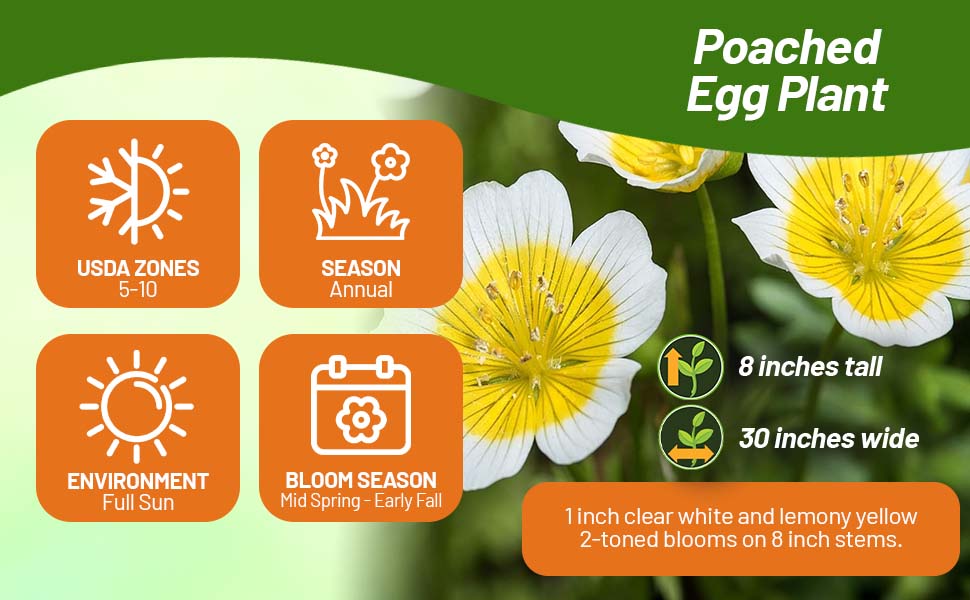
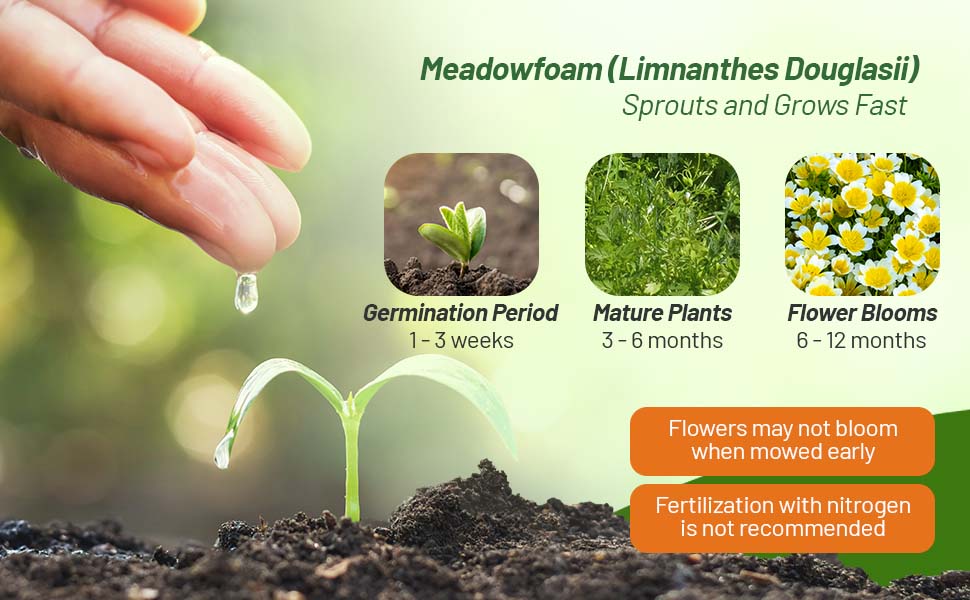
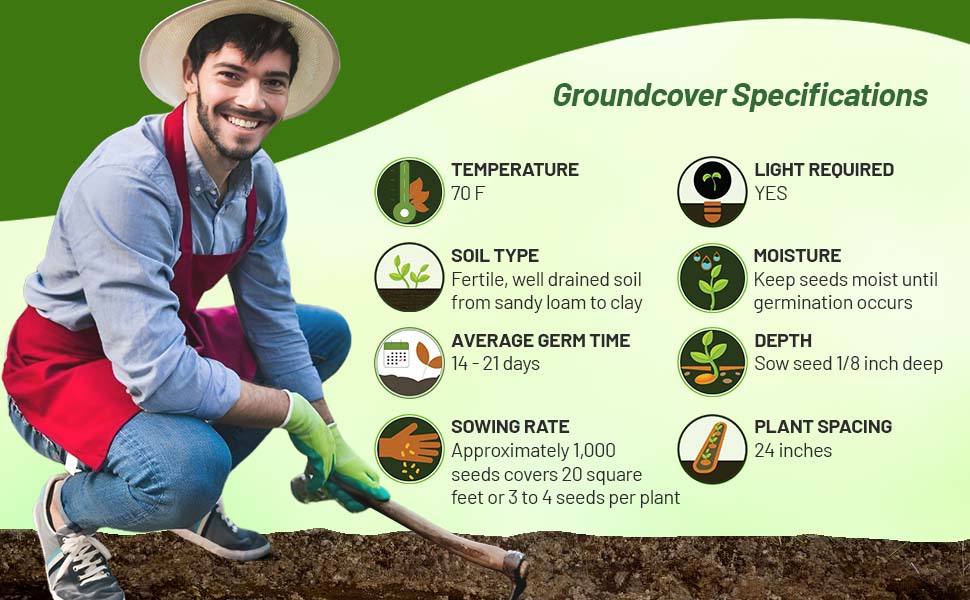
Meadowfoam (Limnanthes Douglasii) - Grow Limnanthes Douglasii seeds for this annual that is native to California. Limnanthes is commonly called Poached Egg Plant or Meadowfoam, and it is not only visually very striking and attractive, but it also has a very nice aroma as well. Limnanthes Poached Egg Plant is not fussy about soil, and it will easily and quickly spread, creating a low-growing, shiny, carpet. Each meadowfoam plant can spread up to 30 inches! Poached Egg Limnanthes is a very long blooming annual with a mass of charming, 1 inch clear white and lemony yellow 2-toned blooms on 8 inch stems. It easily sows its own flower seeds for next year's display. Meadowfoam plants are great as a ground cover plant, and they will grow well in pots too.
Sow Limnanthes Douglasii seeds directly outdoors in a prepared seedbed in spring after danger of frost has passed. Meadowfoam seed should be pressed into the soil and very lightly covered with soil. When large enough to handle, thin the Poached Egg Plant seedlings.
Common Questions
What are these flowers used for in the landscape?
These are great for beds and borders, city gardens, prairie gardens, cottage gardens and in containers.
Do these flowers attract any pollinators?
Yes, these flowers will reward your garden by attracting bees, butterflies and pollinating insects.
Do I need to prune at the end of their bloom season?
Yes, these should be pruned back after they are done flowering.
Planting Directions
TEMPERATURE
73F
AVERAGE GERM TIME
14 - 21 days
LIGHT REQUIRED
Yes
DEPTH
Surface sow seed and press in to soil
SOWING RATE
7 - 8 seeds per plant
MOISTURE
Keep seeds moist until germination
PLANT SPACING
18 - 24 inches
Chinese Foxglove (Rehmannia Angulata Rosy Purple) - Rehmannia Angulata seeds can be grown as annuals in all climates and as perennials in USDA zones 7 - 11. Commonly referred to as Chinese Foxglove, this beauty does well in full sun or partial shade, and the Chinese Foxglove plants continuously produce large, foxglove-like flowers from late spring through fall. The flowers can measure 2 - 3 inches across and are rosy purple with spotted throats. Chinese Foxglove is great in the flower border, and the flowers are nice for cutting. A synonymous botanical name is Rehmannia elata.
How To Grow Chinese Foxglove From Seeds: Sow the Rehmannia Angulata seeds indoors in the late winter. In a starter tray using quality soil, press the flower seeds gently into the soil. Keep the Chinese Foxglove seeds consistently moist until germination occurs. Transplant the Chinese Foxglove seedlings into 3 inch pots and let them grow on indoors until all danger of frost has passed. Harden the Chinese Foxglove plants off for 10 days or more before planting outdoors. Provide winter mulch for extra protection in zones 7 and 8.
















